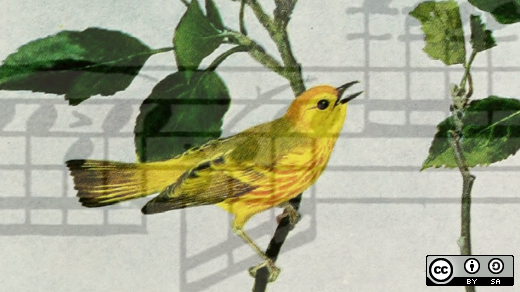My first encounter with computers was in 1980 when my friend's father borrowed an ABC80 from the school where he was working. It was the coolest thing I had seen, and smelled of warm plastic and mystery.
My friend and I spent many days and evenings writing programs and games. But because there were no games available, we had to create them ourselves.
A year later I got my first computer from my parents. It was a Texas Instrument TI-99/4A. It was marvelous. It was gorgeous. We spent even more time creating new things on the new gadget, with all of its new features and amazing graphics.
The years went by, and I dabbled with Spectrum ZX-81, played with Commodore VIC-20, upgraded to Commodore 128. I ended up with the Amiga. I kept the Amiga until I started working, when I became a sound technician and was recording audio books for the visually impaired. There were a few computers at the workplace and when they acted up people asked me, being a kind of computer geek, what to do. I hadn't kept up with the development and still ran my Amiga for games and music; however, I had learned how to troubleshoot, so I used that knowledge on Windows 3.11 and hardware issues.
Then, when the company decided to start investigating digital recording for audio books, I was asked to manage the development.
My first encounter with Linux was when we were setting up the company network and connecting to the outside world through the then outstanding 64KBps ISDN. We needed a firewall, so a consultant installed one for us. In the small server room and closet, he quickly tinkered away on the keyboard. I had worked with the DOS command line to get sound cards to work, but this was something else. Text flew over the screen. Configurations were done. I vividly remember his double-finger tapping on the backspace button when something went wrong... then, he used two fingers to go back faster, what a magician!
Suddenly, the firewall was up and running. He logged off, and I wouldn't get in contact with Linux again for a few years.
In 1998, I saw my work as a Windows server administrator at a large company in Sweden evolve. One of the network guys decided to educate me in UNIX, and he set up a SUN Solaris workstation in my office. I learned a few commands, but having no real task to perform, I didn't go very far with it. I also got a PC to bring home for experimenting and remote work. I decided to check out that Linux thing again. At that time, you could get some installation disks when buying a computer magazine. My first installation was Red Hat 5. It took quite some tinkering to install on my Dell machine. I bought the largest book I ever owned called Linux Undercover. This book helped me along for many years, and I still have it.
This is where my distro hopping began.
I tried all the distributions I could get my hands on; however, I was only installing them, getting them to work, and then moving on to the next one. I was still using a Windows PC for all everyday stuff.
When I started my own company for IT consultancy and web design, I bought the first iMac and also set up a Linux workstation to check web designs on all platforms. Total overkill. No one was browsing the pages I created with Linux then, but at least I knew they would work. Later on, when the iMac was too old to get more updates from Apple, I installed a Mandrake version, which brought new life to the old beauty for years to come.
I got news about Ubuntu Studio in 2007, and moved to it. As a musician and sound technician, I had used a digital Portastudio to record and mix because I enjoyed turning actual knobs when mixing. I used Ubuntu Studio for mastering in Audacity before I had the chance to upgrade all my studio equipment with a new laptop and sound card in 2010. I did a lot of research to get the best USB sound card and compatible laptop for recording. I was quite sad when I realized that even though it looked good on paper, everything didn't quite work well in reality. I could only get the card work on 16 bit in Linux, but in Windows it would record with 24 bit and 96 KHz. I felt frustrated, I was back to a dual boot life.
Then Ubuntu Studio 12.10 was released and my sound card and laptop finally played nicely together. What a joy! However, much had changed in my life with family and work, and I wouldn't be doing much recording at home for quite some time. Instead I found out I could contribute to open source without being a programmer, which had never occurred to me before. Because I had so much joy and benefit from open source I wanted to give something back. I had participated in the Ubuntu Forums for a while and reached out to the Ubuntu Studio team.
For a few years, I would contribute when I could with the little time I had available between family, work, sleep, and all the other things I wanted to dabble within the 24 hours available each day.
Lately, I've moved over from Ubuntu to Debian because I wanted to get closer to the source. Both Debian and I had also developed since the trials I made in earlier years: Debian gained better support for the drivers that I needed, and I had more experience fixing things that might not work out of the box. I have recently upgraded my old laptop with memory and an SSD drive, set up my recording studio in Debian, and I am ready to start creating.
Now, if I could just free up a little bit of time.







11 Comments